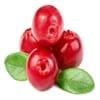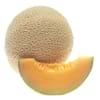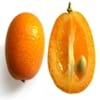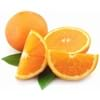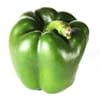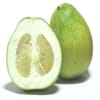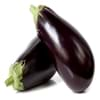Health Benefits
Cancer prevention, Heart care, Kidney stone treatment, Scurvy treatment, Ulcer prevention
Cancer prevention, Heart care, Improves eye vision, Reduces stress, Regulation of heart rate
General Benefits
Anti-inflammatory properties, Boosts immune system, Digestive aid, Fights against infections, Strengthens bones
Anti oxidant properties, Eye care
Skin Benefits
Anti-aging benefits, Reduces wrinkles, Skin rejuvenation, Treatment of acne
Heals sunburn, Reduces wrinkles, Treatment of skin diseases
Hair Benefits
Promotes longer and healthier hair, Protects hair, Treatment of dandruff
Prevents hair loss
Allergy Symptoms
Anaphylaxis, Breathing difficulty, Itching, Skin rash, Swelling of mouth, tongue or lips
Abdominal pains, Anaphylaxis, Breathing difficulty, Diarrhea, Dizziness, Hives, Itching, Lightheadedness, Nasal congestion, Nausea, Swelling of mouth, tongue or lips, Tingling sensation in mouth, Vomiting, Wheezing
Side Effects
Allergic reaction, Diarrhoea, Nausea, Stomach pain, Vomiting
Allergic reaction
Best Time to Eat
Any time except an hour after meal, Don't consume at night and before bed
As a snack in the late afternoon, Eat the fresh ones, avoid mixing with any other foods, don't eat after meal., Morning time (before lunch)
Vitamin B5 (Pantothenic Acid)
Vitamin C (Ascorbic Acid)
Vitamin K (Phyllochinone)
Calories in Fresh Fruit with Peel
Calories in Fresh Fruit without Peel
Season
Autumn
Autumn, Summer
Varieties
Early Black, Howes, Ben Lear and Stevens
Reliance, Sweet Scarlet, Spring Snow, Sugar May, Santa Rosa, Red Beauty, Glowhaven, Cresthaven and Redhaven Peaches
Color
Red
Pink, Red, White, Yellow, Yellowish-orange
Inside Color
White
Yellow
Origin
North America
China
Soil Type
Clay, Sandy, Well-drained
Sandy loam, Well-drained
Climatic Conditions
Warm
Cold, Warm
Facts about
- Europeans thought the cranberry blossom looked like the head of a sandhill crane, hence the name Cranberry.
- They are also known as bounce berries as they bounce when they ripe.
- Cranberries do not grow in water.
- In china, peaches are considered as a symbol of good luck.
- From 1982, august is National peach month in USA.
- In roman times, Peaches were also called as Persian apples, as people assumed that they originated from Persia.
Top Producer
United States of America
China
Other Countries
Azerbaijan, Belarus, Bulgaria, Canada, Latvia, Macedonia, Romania, Tunisia, Ukraine
Greece, Italy, Spain, United States of America
Top Importer
Europe
Germany
Top Exporter
United States of America
Spain
Botanical Name
Vaccinium Macrocarpon
Prunus persica
Synonym
Oxycoccus macrocarpus
Prunus Persica
Subkingdom
Tracheobionta
Tracheobionta
Division
Magnoliophyta
Magnoliophyta
Class
Magnoliopsida
Magnoliopsida
Subclass
Dillenhidae
Rosidae
Family
Ericaceae
Rosaceae
Species
Vaccinium macrocarpon
P. persica
Difference Between Cranberry and Peach
We might think that Cranberry and Peach are similar with respect to nutritional value and health benefits. But the nutrient content of both fruits is different. Cranberry and Peach Facts such as their taste, shape, color, and size are also distinct. The difference between Cranberry and Peach is explained here.
The amount of calories in 100 gm of fresh Cranberry and Peach with peel is 46.00 kcal and 39.00 kcal and the amount of calories without peel is 46.00 kcal and 39.00 kcal respectively. Thus, Cranberry and Peach belong to Low Calorie Fruits and Low Calorie Fruits category.These fruits might or might not differ with respect to their scientific classification. The order of Cranberry and Peach is Ericales and Rosales respectively. Cranberry belongs to Ericaceae family and Peach belongs to Rosaceae family. Cranberry belongs to Vaccinium genus of Vaccinium macrocarpon species and Peach belongs to Prunus genus of P. persica species. Beings plants, both fruits belong to Plantae Kingdom.


